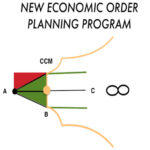
In 1971 Parke-Davis sponsored a research project into the economics of the lives of 350 surgeons in Southern California. The initial question of the research project was “What do you need to know to succeed financially?” This one-question protocol evolved into the Economics of Life Research Project and the Doctors Economic Research Project. These research projects on the economics of doctors’ lives generated unique planning models, planning principles, and planning rules. An economic education program was then developed to present findings of the research at a continuing education program for physicians and dentists that was sponsored by the University of Pennsylvania in 1973.
The research project protocol was expanded to include a second question that was introduced to attendees at the University of Pennsylvania presentation. The second question was: “What do you need to have to succeed financially?” The near-unanimous response to this second question from seminar attendees was a request to develop a planning program to quantify the Economic Life Cycle Model and the Overflowing Buckets Model priority allocation-of earnings planning models in individual doctors’ personal circumstances.
Additional research and development resulted in the creation of a personalized written capital accumulation plan that identified retirement savings goals and included a personalized version of the seminar’s Overflowing Buckets Model. The written book planning program was then made available to attendees at the University of Pennsylvania presentations and to attendees at medical and dental schools across the country, including the University of Alabama, Georgetown University, the Medical College of Virginia and the University of California at Los Angeles. Medical and dental associations and societies then began sponsoring presentations of the economic education program.
The written book planning program presented a before and after picture of a productive doctor’s “buckets” allocations of surplus earnings exceeding lifestyle costs to acquire catastrophic loss protection, retirement savings and guaranteed life income. These personalized capital accumulation plans were then made available to attendees at the economic education seminars. In 1974 a membership association was formed for doctors and for non-doctors that provided independent sponsorship for Economics of Life Seminars and also provided seminar attendees access to the personalized written book plans and related planning implementation services as a part of their association memberships.
Commercial banks in Pennsylvania, California, North Carolina, Arizona and Texas who had learned of the research project and planning program from doctors in their market areas also sponsored economic education seminar programs on the research for highly productive doctors, business owners and executives, and affluent individuals beginning in 1977. The bank seminars initially included doctors, business owners, and corporate executives who were existing bank customers. The banks also sponsored a second series of the economic education seminar programs for their non-bank customers.